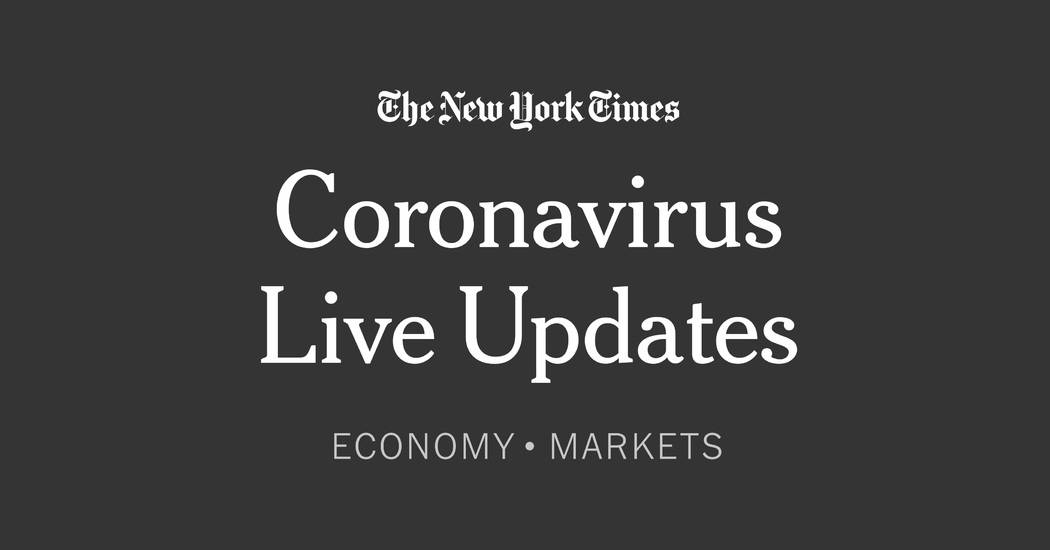Treasury Secretary Steven Mnuchin on Friday called on Congress to work with the Trump administration to pass additional stimulus legislation by the end of the month as the resurgent coronavirus pandemic left the trajectory of the economic recovery uncertain.
The request comes as millions of Americans are about to see their expanded unemployment insurance benefits expire and as lawmakers embark on an intense week of negotiations over what would be the fourth significant bailout package since the virus shuttered large swaths of the United States economy earlier this year.
In prepared testimony before the House Committee on Small Business, Mr. Mnuchin said that the next round of money to support the economy should be targeted to help industries that have been hardest hit by the pandemic, as well as smaller businesses and low- to middle-income families. Mr. Mnuchin also said that the Paycheck Protection Program, which provides forgivable small business loans, should be extended but with a focus on helping the restaurant, hotel, travel and hospitality sectors.
“We are monitoring economic conditions closely,” Mr. Mnuchin said in his prepared remarks. “Certain industries, such as construction, are recovering quickly, while others, such as retail and travel, are facing longer-term impacts and will require additional relief.”
He added: “We are also sensitive to the fact that certain areas of the country are experiencing increased numbers of cases of the virus.”
The Treasury secretary was joined at the hearing by Jovita Carranza, the administrator of the Small Business Administration, whose agency has been responsible for deploying the $660 billion Paycheck Protection Program.
Both Mr. Mnuchin and Ms. Carranza are expected to face questions about where the money has gone and whether it is getting to businesses that need funds. Data released on loans over $150,000 showed that while much of the money has gone to restaurants, medical offices and car dealerships, Washington lobbying shops, high-priced law firms and special-interest groups also received big loans.
Stocks drifted on Friday as investors weighed more earnings reports and the uncertain prospects for a big-ticket economic rescue package in Europe.
The S&P 500 started the day with a small gain. Stocks in Europe were mixed, with shares traded in London and Frankfurt narrowly higher, while those in Paris declined.
A rise in coronavirus cases, a recovering economy, signs of progress in possible treatments and vaccines for Covid-19, and a slew of corporate earnings reports are all pushing and pulling stocks in different directions. That’s made trading more volatile lately, with key benchmarks often changing directions midday as sentiment shifts.
But Wall Street has still managed to climb for the past three weeks. The S&P 500 is on track to gain about 1 percent this week, and about 7 percent over the past three weeks.
On Friday, Netflix was among the worst performing stocks in the S&P 500. Its shares fell more than 5 percent after it forecast a weak current quarter, despite a surge in subscribers in the second quarter.
Weighing on sentiment was a drop in a key consumer sentiment indicator. Preliminary results from the University of Michigan’s consumer sentiment index showed that it fell in July, as the coronavirus surged across much of the United States. Consumers account for the bulk of economic activity in the U.S., and the dimming of sentiment could signal trouble ahead for retailers and other businesses that count on spending by Americans.
But two big European firms reported quarterly earnings that lifted their shares. The German automaker Daimler said a late-quarter surge in sales helped it lose less money than expected; its shares rose more than 4 percent. And the Swedish tech company Ericsson reported a rise in 5G network sales, leading to earnings that beat expectations; its shares gained more than 10 percent.
The fate of the European Union’s proposed 750 billion euro (about $856 billion) coronavirus rescue plan was to be discussed by the bloc’s leaders on Friday and Saturday in Brussels. The plan is opposed by a few countries — known as the Frugal Four — and it remains unclear if the meeting will resolve the dispute.
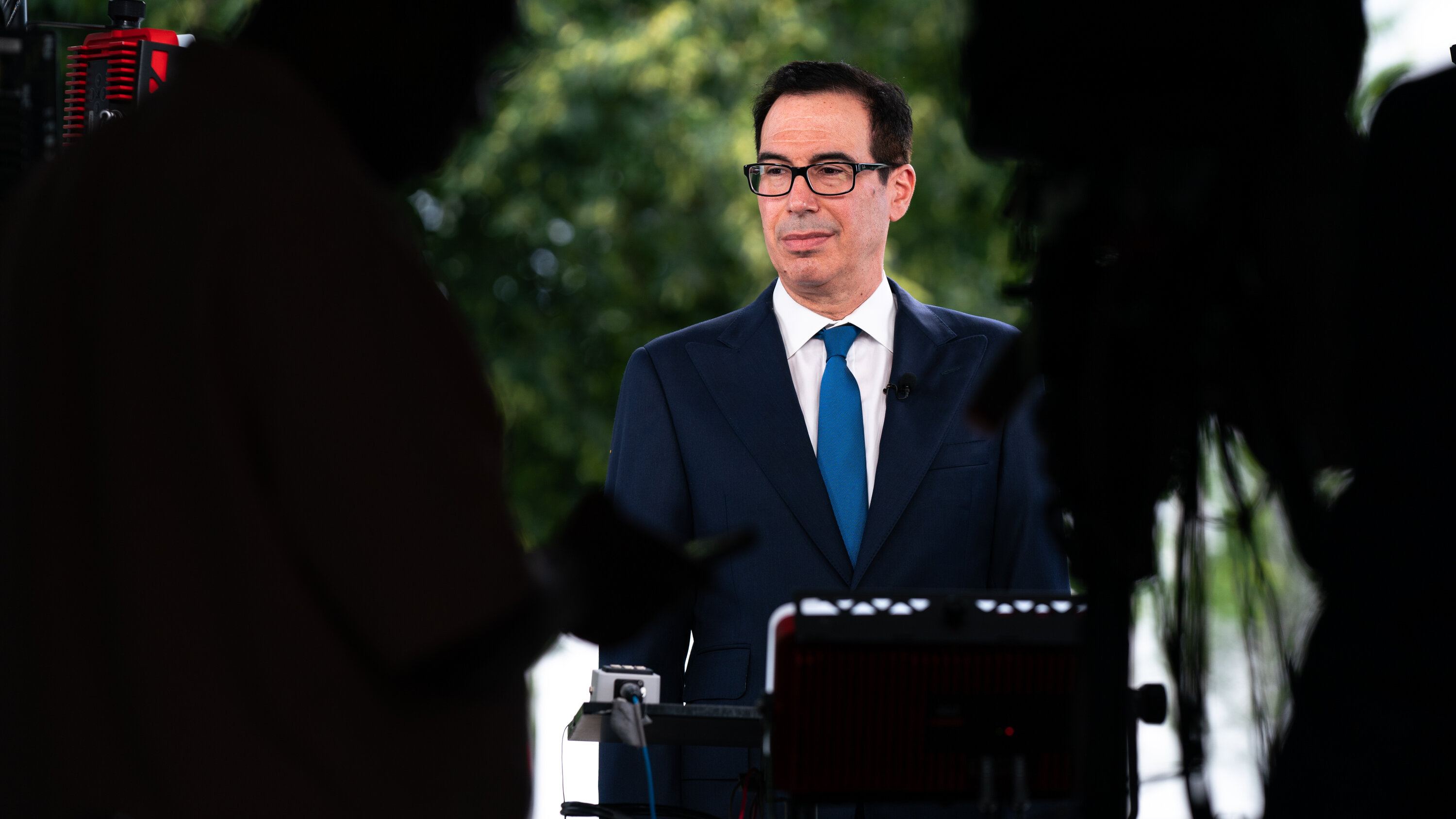
1️⃣ Big banks are bracing for trouble.
America’s four largest consumer lenders — Bank of America, Citigroup, JPMorgan Chase and Wells Fargo — set aside $33 billion to cover potential loan losses, nearly $10 billion more than in the previous quarter and $30 billion more than the same time last year. And even the investment banks that had a better quarter thanks to rising markets — Goldman Sachs and (especially) Morgan Stanley — said their good fortune was unlikely to last.
2️⃣. People are watching a lot of streaming content.
Netflix added a larger-than-expected 10 million new subscribers in the second quarter, on top of 16 million in the previous quarter. So why did its stock price plunge? The company appears to be borrowing customers from the future: It expects to add only 2.5 million subscribers in the third quarter.
3️⃣. Pizza delivery thrives in a pandemic.
Domino’s beat expectations for both sales and profits in the second quarter by a lot. Despite some of its locations being forced to close because of lockdowns, it has managed to report 37 consecutive quarters of same-store sales growth in the United States and an astonishing 106 quarters in a row at its international operations. Domino’s stock price is up nearly 40 percent so far this year, about the same percentage rise as high-flying tech stocks like Apple.
— Jason Karaian
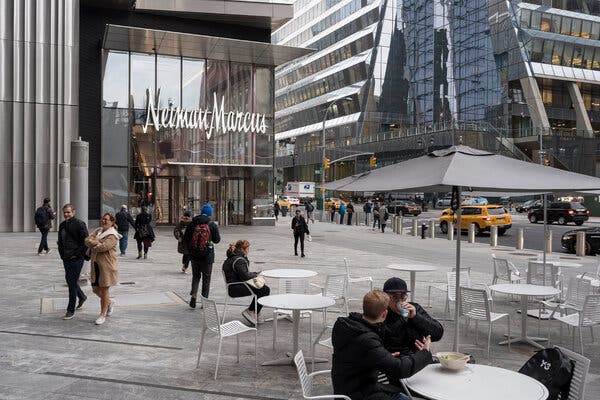
Since March, economic lockdowns have forced more and more companies — including well-known names like Hertz, J. Crew and Neiman Marcus — to file for bankruptcy protection. But the bankers and lawyers who help troubled companies repair their balance sheets and guide them through Chapter 11 reckon that the worst is still to come, as reported in today’s DealBook newsletter.
About 3,600 companies filed for Chapter 11 in the first half of 2020, more than any year since 2012, according to the American Bankruptcy Institute. The past few weeks alone have brought filings by the fracking pioneer Chesapeake Energy, the Japanese home goods company Muji USA and the retailer New York & Company.
But the pace of filings slowed last month. Advisers cited the huge federal government programs for stabilizing the economy, as well as efforts by companies to bolster their cash by drawing down their credit lines and issuing trillions of dollars’ worth of new bonds. Earlier-than-expected reopenings have bolstered some businesses’ performance, allowing them to bring in some sales — critical to servicing their debts.
Yet as coronavirus cases surge again, an uptick in filings may follow. “We’re starting to see the pendulum swing back toward fear again,” William Hardie, a managing director in Houlihan Lokey’s financial restructuring group, said in a telephone interview.
What comes next could be ugly. Many companies that saved themselves by borrowing more money are now in a bind: They have mortgaged nearly all their available assets, leaving little wiggle room. And while creditors may be willing to give borrowers concessions on existing loans, they not be so generous on requests for more cash.
That could lead to more companies will be taken over by lenders, who would convert their loans into equity. So far, advisers say, talks between debtors and creditors have been sanguine, with relatively few of the disagreements that often complicate Chapter 11 cases. “There’s no finger-pointing,” Mr. Hardie said. “Everyone realizes this is no one’s fault.”

Nonprofits are facing stark challenges as coronavirus upends revenue and donations amid mounting community needs, and the Federal Reserve on Friday moved to provide limited financial relief to the organizations.
The Fed widened its midsize business loan program so that it can be used by nonprofit hospitals, universities, and social service organizations, making good on an earlier promise to do so. Prior versions of the so-called “Main Street” loan program were not designed to suit the nonprofits’ unique structures: Eligibility hinged on financial metrics that made little sense in a nonprofit context.
Through the Main Street program, nonprofits and businesses can get relatively cheap loans through banks. The banks must retain a 5 percent slice of the loan but can sell the rest to the Fed.
“Nonprofits provide vital services across the country and employ millions of Americans,” Fed Chair Jerome H. Powell said in a statement accompanying the release. “We have listened carefully and adapted our approach so that we can best support them in carrying out their vital mission during this extraordinary time.”
The Fed released proposals on how it might broaden the program to include nonprofits on June 15. Based on that feedback, the Fed lowered the minimum employment threshold for nonprofits that want to use the program from 50 employees to 10. The minimum loan size is $250,000, and the payback period is 5 years — the same terms as the rest of the program.
The expansion comes after the Fed received scores of comment letters from nonprofits and community members around the country asking for an option geared toward universities and social organizations. Lawmakers have also pushed the central bank and Treasury, which backs up the Main Street program with funding to protect against losses on bad loans, to include nonprofits.
While the Fed’s Main Street lending program for businesses is now fully operational, it had purchased just $12 million in loans through July 15, data released Thursday showed. The program’s expected capacity is $600 billion, but its design may discourage use unless markets come under greater stress.
The central bank did not say when the nonprofit version will be up and running.

On May 5, Brian Chesky, Airbnb’s chief executive, looked into his webcam to address thousands of his employees, tell them that the coronavirus had crushed the travel industry, including their home rental start-up. Divisions would have to be cut and workers laid off.
“I have a deep feeling of love for all of you,” Mr. Chesky said, his voice cracking. “What we are about is belonging, and at the center of belonging is love.” Within a few hours, 1,900 employees — a quarter of Airbnb’s work force — were told they were out.
The moves thrust Airbnb into the center of a growing debate in Silicon Valley: What happens when a company that has positioned itself as family to its employees reveals that it is just a regular business with the same capitalist concerns — namely, survival — as any other?
Start-ups that sell everything from mattresses to data-warehousing software have long used “making the world a better place”-style mission statements to energize and motivate their workers. But as the economic fallout from the coronavirus persists, many of those gauzy mantras have given way to harsh realities like budget cuts, layoffs and bottom lines.
That now puts companies with a “commitment” culture at the highest risk of losing what made them successful, said Ethan Mollick, an entrepreneurship professor at the University of Pennsylvania’s Wharton School.
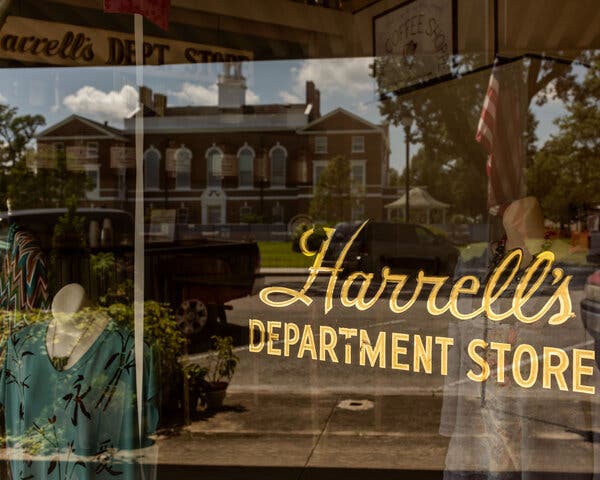
Harrell’s Department Store, on Wright Street in Burgaw, N.C., has served the town’s residents with everything they’ve needed for 117 years, like baby shoes and horse collars in the original wooden building, or church hats and appliances in the two-story red brick building constructed in 1924.
The store survived changing fashions, world wars, the Great Depression and the 2008 financial crisis, and floods. But it will not survive the pandemic.
Since March, the pandemic has claimed at least a half-dozen businesses in or near the century club. For example, the Boston Hotel Buckminster, which opened in 1897, closed its doors; Ritz Barbecue, which opened in a small shed in Allentown, Pa., in 1927, served its last ribs and ice cream last month; and Michigan Maple Block Company, a wood products company in northern Michigan, is shuttering its manufacturing plant and laying off 56 workers after 139 years.
Many small-businesses have been devastated by the pandemic; nearly a quarter of companies closed either temporarily or permanently in March and April, according to a study published by the National Bureau of Economic Research.
But for firms that have been part of their communities for 100 years or more, there’s more at stake than livelihood — there’s legacy and, in some cases, generations of family ties.
“It’s been very difficult,” said Vernon Harrell, 65, the department store’s fourth-generation owner. “I did not want to be the one who brought it to an end.”
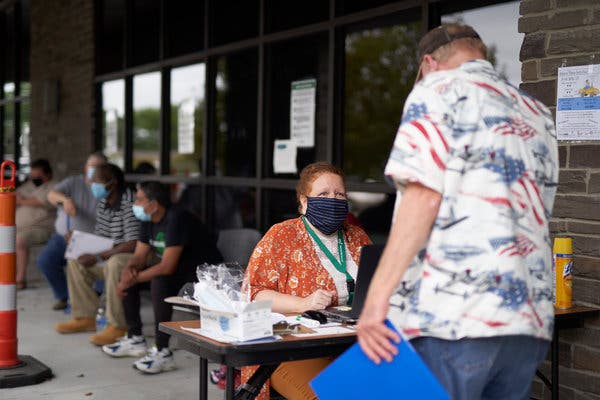
After suspending the requirements at the height of the coronavirus pandemic, several states are again asking recipients of unemployment benefits to prove that they are actively searching for jobs.
Arkansas, Colorado, Missouri and Nebraska have reimposed the rules in recent weeks, although the job market remains weak and the national unemployment rate is in double digits.
Experts say it will be hard to show applications for specific jobs when there are so few openings and the surge in coronavirus cases in many parts of the country has brought new restrictions on economic activity.
“It’s hard in any environment to show that you’ve done that many searches,” said Michele Evermore, senior researcher and policy analyst at the National Employment Law Project. “Right now, I don’t understand how you apply for a job that doesn’t exist.”
Some authorities “have this mentality that people are just sitting home and collecting benefits,” she said. “I think the incentive for people to take benefits is that we have a plague.”
In Nebraska, Gov. Pete Ricketts issued an executive order that reinstated the requirements this week and cited 30,000 open jobs in the state. Other states have moved more slowly. Texas was expected to bring back the job search rules at the end of June but delayed the move after coronavirus cases surged.
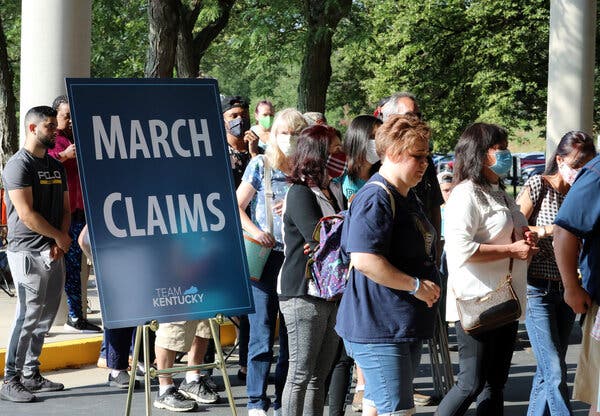
An abundance of data underscores the nation’s economic distress. But the number of Americans receiving unemployment benefits remains something of an educated guess.
The figure almost certainly exceeds 20 million, but issues with data collection make a precise accounting difficult.
More than 17 million people were receiving state benefits the first week of July, a figure that does not include those who filed first-time claims last week or those receiving benefits under a federal extension because their state benefits have expired.
The Labor Department says that as of late June — the most recent period measured — an additional 14 million people were tapping into Pandemic Unemployment Assistance, a federal program to aid freelancers, the self-employed and others ordinarily ineligible for state jobless benefits. But those numbers have been plagued by double-counting and other issues, and most economists think the true number is probably lower.
Still, there is little doubt that tens of millions of people are receiving benefits. The number has been gradually falling, but that progress could soon reverse. Weekly data collected by the Census Bureau as part of a new experimental survey suggests that the number of Americans who are working has fallen by about 2.6 million since mid-June.

Twitter fan. Beer specialist. Entrepreneur. General pop culture nerd. Music trailblazer. Problem solver. Bacon evangelist. Foodaholic.

